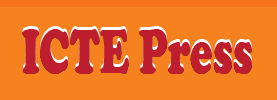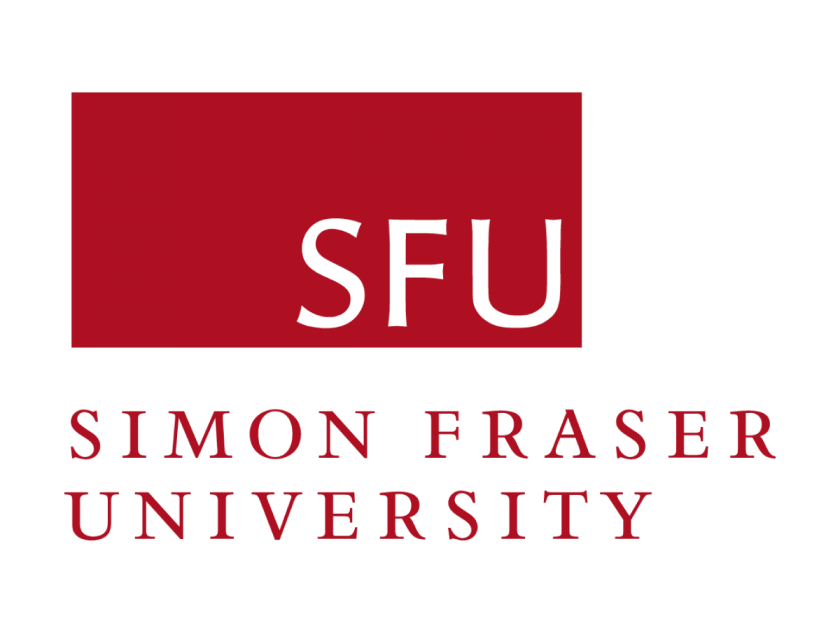An Investigation into Students’ Perceptions of Creating Student-generated Digital Videos in PBL at Saigon University
DOI:
https://doi.org/10.54855/paic.24621Keywords:
Project-based learning (PBL), students’ motivation and engagement, pedagogical models, learning practices, student-created videoAbstract
Digital video is a promising technology that can be utilized in schools to support, expand, or transform teaching methods and curriculum results. Particularly, it has the potential to apply student-generated digital videos to improve students' learning practices and outcomes. The aim of this study is to explore students’ perceptions of the application of student-generated videos in Project-based learning (PBL). With the qualitative method approach, the instrument of semi-structured interviews and students’ reflections were employed as the primary method of data collection. The participants were sophomores majoring in English linguistics and English pedagogy at Saigon University. Despite some limitations, the results indicate that the project of making student-generated digital videos yields some positive benefits for the students in developing their creativity and social skills.References
Almutairi, F. (2018). An investigation of the use of student-generated digital video to support students' engagement in their own learning University of Southampton]. https://eprints.soton.ac.uk/419582/
Bell, S. (2010). Project-based learning for the 21st century: Skills for the future. The clearing house, 83(2), 39-43. https://doi.org/https://doi.org/10.1080/00098650903505415 DOI: https://doi.org/10.1080/00098650903505415
Cocco, S. (2006). Student leadership development: The contribution of project-based learning [Unpublished Master’s thesis. , Royal Roads University, Victoria, BC]. https://central.bac-lac.canada.ca/.item?id=MR17869&op=pdf&app=Library&oclc_number=271429340
Creswell, J. W., & Poth, C. N. (2016). Qualitative inquiry and research design: Choosing among five approaches. Sage publications.
Dahya, N. (2017). Critical perspectives on youth digital media production:‘Voice’and representation in educational contexts. Learning, Media and Technology, 42(1), 100-111. https://doi.org/https://doi.org/10.1080/17439884.2016.1141785. DOI: https://doi.org/10.1080/17439884.2016.1141785
Delimasari, A., Fauziah, N., Anjarsari, D. P., & Arochman, T. (2023). Classroom’s Environment and FOMO: Students’ Perspectives. IDEAS: Journal on English Language Teaching and Learning, Linguistics and Literature, 11(2), 1494-1506. https://doi.org/https://doi.org/10.24256/ideas.v11i2.3941
Engin, M. (2014). Extending the flipped classroom model: Developing second language writing skills through student-created digital videos. Journal of the Scholarship of Teaching and Learning, 14(5), 12-26. https://doi.org/https://doi.org/10.14434/josotlv14i5.12829 DOI: https://doi.org/10.14434/12829
Hoe, L. S., Chuan, T. C., Hussin, H., & Jiea, P. Y. (2019). Enhancing student competencies through digital video production: a project-based learning framework. Journal of Business and Social Review in Emerging Economies, 5(1), 51-62. https://doi.org/https://doi.org/10.26710/jbsee.v5i1.508 DOI: https://doi.org/10.26710/jbsee.v5i1.508
Holm, M. (2011). Project-based instruction: A review of the literature on effectiveness in prekindergarten. River academic journal, 7(2), 1-13. https://www.researchgate.net/publication/329000774_PROJECT-BASED_INSTRUCTION_A_Review_of_the_Literature_on_Effectiveness_in_Prekindergarten_through_12th_Grade_Classrooms
Hung, W., Jonassen, D. H., & Liu, R. (2008). Problem-based learning. In Handbook of research on educational communications and technology (pp. 485-506). Routledge. https://doi.org/https://doi.org/10.4324/9780203880869 DOI: https://doi.org/10.4324/9780203880869
Kearney, M., & Schuck, S. (2006). Spotlight on authentic learning: Student developed digital video projects. Australasian Journal of Educational Technology, 22(2), 189-208. https://doi.org/https://doi.org/10.14742/ajet.1298 DOI: https://doi.org/10.14742/ajet.1298
Koksal, D. (2004). To Kill the Blackboard? Technology in Language Teaching and Learning. Turkish Online Journal of Educational Technology-TOJET, 3(3), 62-72. https://eric.ed.gov/?id=EJ1101922
Krajcik, J. S., & Blumenfeld, P. C. (2006). Project-based learning. In The Cambridge Handbook of the Learning Sciences (pp. 317-333). New York: Cambridge University Press. https://doi.org/https://doi.org/10.1017/CBO9780511816833.020 DOI: https://doi.org/10.1017/CBO9780511816833.020
Kvale, S. (1996). The 1,000-page question. Qualitative inquiry, 2(3), 275-284. https://doi.org/https://doi.org/10.1177/107780049600200302 DOI: https://doi.org/10.1177/107780049600200302
Larmer, J., & Mergendoller, J. R. (2010). Seven essentials for project-based learning. Educational leadership, 68(1), 34-37. https://ascd.org/el/articles/seven-essentials-for-project-based-learning
Mali, Y. C. G. (2016). Project-based learning in Indonesian EFL classrooms: From theory to practice. IJEE (Indonesian Journal of English Education), 3(1), 89-105. https://doi.org/https://doi.org/10.15408/ijee.v3i1.2651 DOI: https://doi.org/10.15408/ijee.v3i1.2651
Marshall, C., & Rossman, G. B. (2014). Designing qualitative research. Sage publications.
Naqvi, S. (2015). Student-created digital video and language learning: Voices from Omani classrooms. Third 21st CAF Conference at Harvard, in Boston, USA, 6(1), 246-259. https://www.researchgate.net/publication/313675949_Student_Created_Digital_Video_and_Foreign_Language_Learning_Voices_from_Omani_Classrooms
Palinkas, L. A., Horwitz, S. M., Green, C. A., Wisdom, J. P., Duan, N., & Hoagwood, K. (2015). Purposeful sampling for qualitative data collection and analysis in mixed method implementation research. Administration and policy in mental health and mental health services research, 42, 533-544. https://doi.org/https://doi.org/10.1007/s10488-013-0528-y DOI: https://doi.org/10.1007/s10488-013-0528-y
Pham, D. L., Nguyen, T. T., & Phan, T. P. M. (2023). Application of Project-based Learning to Improve the Learning Styles of Tourism Students at Hanoi Open University. Proceedings of the AsiaCALL International Conference, 4, 188-208. https://doi.org/https://doi.org/10.54855/paic.23414 DOI: https://doi.org/10.54855/paic.23414
Ramsook, L. (2018). A methodological approach to hermeneutic phenomenology. International journal of humanities and social sciences, 10(1), 14-24. https://www.researchgate.net/profile/Leela-Ramsook/publication/323687948_A_Methodological_Approach_to_Hermeneutic_Phenomenology/links/5aa921fbaca272d39cd50403/A-Methodological-Approach-to-Hermeneutic-Phenomenology.pdf
Robin, B. R. (2008). Digital storytelling: A powerful technology tool for the 21st century classroom. Theory into practice, 47(3), 220-228. https://doi.org/https://doi.org/10.1080/00405840802153916 DOI: https://doi.org/10.1080/00405840802153916
Ryan, B. (2013). A walk down the red carpet: students as producers of digital video-based knowledge. International Journal of Technology Enhanced Learning, 5(1), 24-41. https://doi.org/https://doi.org/10.1504/IJTEL.2013.055950 DOI: https://doi.org/10.1504/IJTEL.2013.055950
Silverman, D. (2017). How was it for you? The Interview Society and the irresistible rise of the (poorly analyzed) interview. Qualitative research, 17(2), 144-158. https://doi.org/https://doi.org/10.1177/1468794116668231 DOI: https://doi.org/10.1177/1468794116668231
Sundari, H., & Leonard, L. (2020). Exploring needs of academic writing course for LMS in the new normal. JTP-Jurnal Teknologi Pendidikan, 22(3), 140-150. https://doi.org/https://doi.org/10.21009/jtp.v22i3.16073 DOI: https://doi.org/10.21009/jtp.v22i3.16073
Supe, O., & Kaupuzs, A. (2015). The effectiveness of project-based learning in the acquisition of English as a foreign language. Society. Integration. Education. Proceedings of the international scientific conference, 2, 210-218. https://doi.org/https://doi.org/10.17770/sie2015vol2.458 DOI: https://doi.org/10.17770/sie2015vol2.458
Tongsakul, A., Jitgarun, K., & Chaokumnerd, W. (2011). Empowering students through project-based learning: Perceptions of Instructors and students in vocational education institutes in Thailand. Journal of College Teaching & Learning (Online), 8(12), 19. https://doi.org/10.19030/tlc.v8i12.6618 DOI: https://doi.org/10.19030/tlc.v8i12.6618
Thomas, J. W. (2000). A review of research on project-based learning. https://www.researchgate.net/publication/238162544_A_Review_of_Research_on_Project-Based_Learning
Thomas, J. W., Mergendoller, J. R., & Michaelson, A. (1999). Project-based learning: A handbook for middle and high school teachers. Buck Institute for Education.
Tran, H. M. (2022). Students’ Perceptions of Video-based Tasks in the “American English File” Series: A Survey at People’s Security University. AsiaCALL Online Journal, 13(5), 15-28. https://doi.org/https://doi.org/10.54855/acoj.221352 DOI: https://doi.org/10.54855/acoj.221352
Truc, T. T. T., Van, N. T. N., & Huong, N. T. T. (2023). Student-Produced Videos: Why not? 19th International Conference of the Asia Association of Computer-Assisted Language Learning (AsiaCALL 2022), 93-102. https://doi.org/10.2991/978-2-38476-042-8_9 DOI: https://doi.org/10.2991/978-2-38476-042-8_9
Wahyuningsih, L., Huwaidah, H. K., Maryam, F. F. D., & Arochman, T. (2023). Learners strategies used by non-English department students in learning English: Students’ perspective. KABASTRA: Kajian Bahasa Dan Sastra, 3(1), 12-22. https://doi.org/https://doi.org/10.15408/ijee.v3i1.2651 DOI: https://doi.org/10.31002/kabastra.v3i1.1083
Widodo, H. P., Budi, A. B., & Wijayanti, F. (2016). Poetry Writing 2.0: Learning to Write Creatively in a Blended Language Learning Environment. Electronic Journal of Foreign Language Teaching, 13(1), 30-48. https://www.researchgate.net/publication/305445329_Poetry_writing_20_Learning_to_write_creatively_in_a_blended_language_learning_environment
Downloads
Published
How to Cite
Issue
Section
License
Copyright (c) 2024 Nguyen Hoang Thanh Tam, Dang Vu Minh Thu, Vu Thi Kim Chi

This work is licensed under a Creative Commons Attribution 4.0 International License.
Copyright
The copyright of all articles published in the Proceedings of the AsiaCALL International Conference (paic) remains with the Authors, i.e. Authors retain full ownership of their article. Permitted third-party reuse of the open access articles is defined by the applicable Creative Commons (CC) end-user license which is accepted by the Authors upon submission of their paper. All articles in the aicp are published under the CC BY-NC 4.0 license, meaning that end users can freely share an article (i.e. copy and redistribute the material in any medium or format) and adapt it (i.e. remix, transform and build upon the material) on the condition that proper attribution is given (i.e. appropriate credit, a link to the applicable license and an indication if any changes were made; all in such a way that does not suggest that the licensor endorses the user or the use) and the material is only used for non-commercial purposes.









